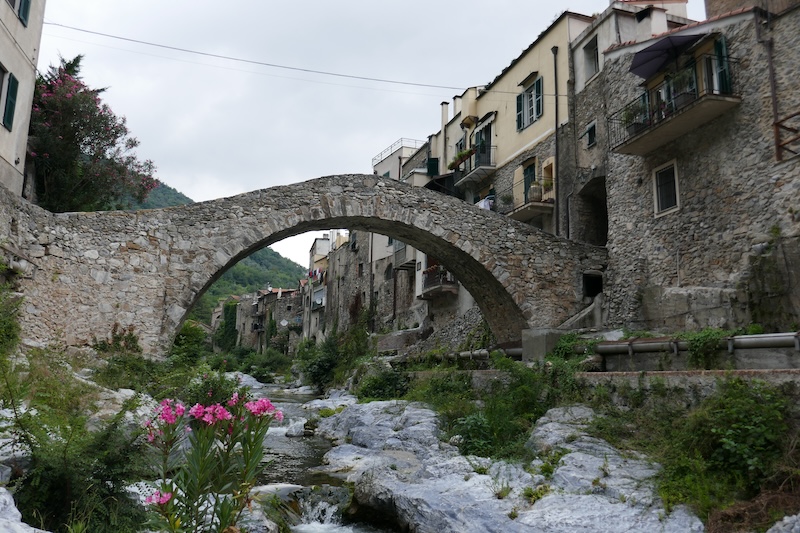
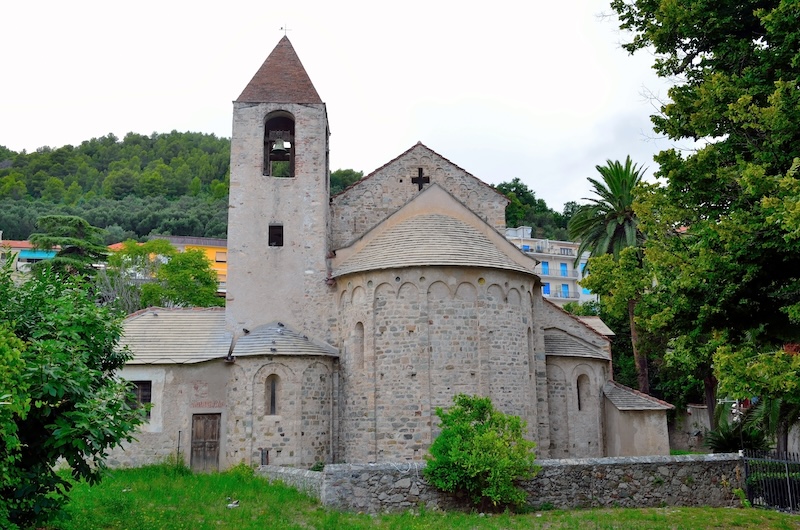
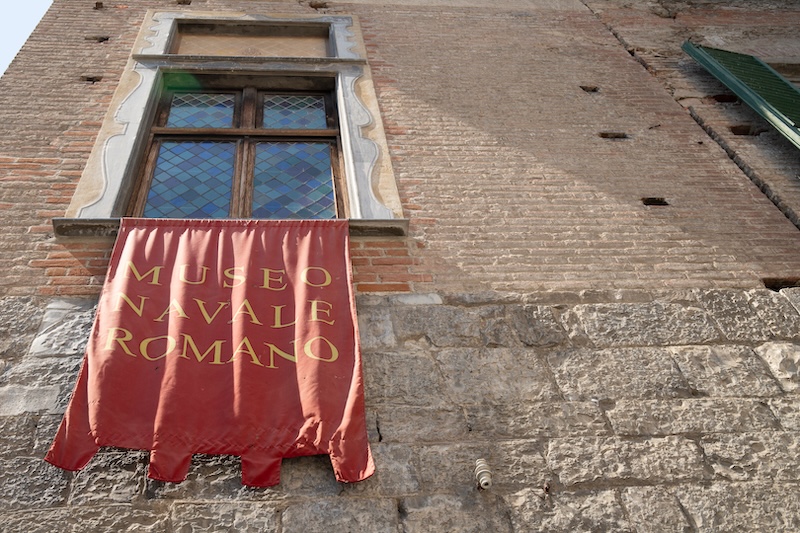


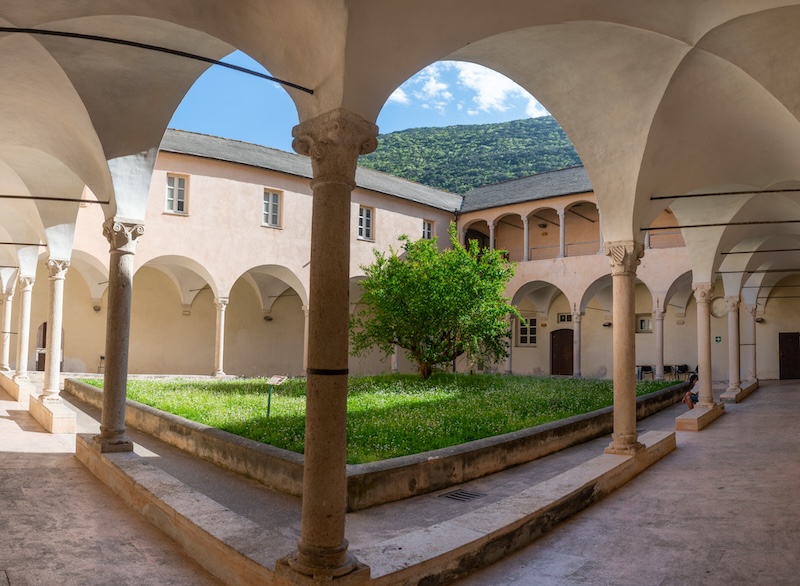
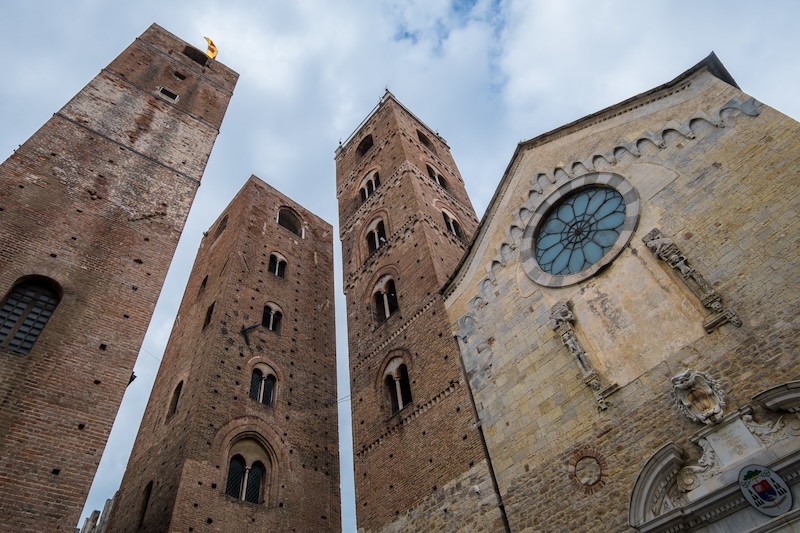
Toirano Caves and Finalborgo Archaeological Museum Educational Objective: To deepen through direct observation of places and artifacts some aspects of Prehistory such as the evolution of the human species, technological acquisitions, the birth of art, ritual practices and the sense of the afterlife, hunting and agriculture, human diseases, and the evolution of fauna. (proposed by Sibilla Cooperative Society and Our Liguria).
Albenga and a visit to the Roman Naval Museum and Roman-era remains in the city - walk from Albenga to Alassio among Mediterranean scrub and numerous Roman remains, on the traces of the ancient Via Iulia Augusta in front of Gallinara Island - excursion to Val Ponci to see the ancient Roman Bridges. Learning Objective: To delve into live aspects of Roman history such as the importance of communication routes, navigation, funerary sites, and religion through the wars of conquest and Romanization that led to the conformation of the Roman city through social and entertainment venues. (proposed by the Sibyl Cooperative Society and Our Liguria)
Albenga - itinerary in the historic center among houses, towers, medieval loggias to discover the important cathedral - Noli: visit to the historic center to discover the church of S. Paragorio - medieval village of Finalborgo and walk along the road of the Queen Learning Objective: To delve into historical aspects of the Middle Ages such as medieval administrative structures, the structure of the medieval village: the urban and architectural differences between commune and fiefdom, places of spirituality, the activities of monastic orders, and the castle. (proposed by the Sibyl Cooperative Society and Our Liguria)
Children will descend into the bowels of the earth and contemplate the imaginative architecture of nature...They will listen to the sounds of stalactites and discover mysterious traces left by prehistoric men...caves, an enchanted world! (Alternatively: Caves of Borgio Verezzi / Train Cave of Bergeggi). (proposed by Our Liguria)
- Morning: Living above a Roman 'castrum'. The itinerary in the historic center will be divided into playful moments in which children can discover the vestiges of Albingaunum and explore aspects of Roman history (the divide and rule, the clash with the Ligurian tribes...). In small teams, they will have pictures of Roman artifacts reused in the medieval city-the details will be discovered along the way. Visit the Roman Naval Museum: amidst amphorae and precious artifacts from the sunken oneraria ship they will discover some curiosities, such as the crew's playing dice, hazelnuts from the 1st century B.C. and a faithful model of the ship. Tour of the Roman Archaeological Museum The activity will be carried out by providing each boy with a photograph of the detail of a monument, a work of art, or a painting, accompanied by a short explanatory text. During the guided tour, each boy should pay attention to whether, in the various stages in which the visit is divided, the detail in his possession is present. Knowledge of history and monuments will thus be highlighted by both the guide's explanation and the contribution made by each boy. The activity may be carried out by dividing students into small teams. - Afternoon: The Via Julia Augusta. Historical-naturalistic walk along the Roman necropolis and the Via Julia Augusta, opposite the curiously turtle-shaped Gallinaria Island. (proposed by Our Liguria)
- NOLI: ancient seaside village, fishing village The 5th Maritime Republic is now a quiet hamlet where many families make their living from fishing, still practiced with traditional methods. Route played in the carruggi to learn about the history of Noli and the workings of the main systems for defending against enemies and pirates (towers, castle, house forts, city walls...). Life of ... sea wolves! At the beach, children will observe the work of fishermen, among nets, goiters and ...seagulls! Possibility to climb inside one of the ancient medieval towers! (proposed by Our Liguria) - ALBENGA: in the shadow of medieval towers. Medieval loggias and palaces reveal cozy and quiet environments, such as the charming Piazzetta dei Leoni. The children will explore topics related to business activities, struggles between Guelphs and Ghibellines, and spirituality. They will visit the splendid early Christian Baptistery (5th cent.) that preserves a magnificent Byzantine-style mosaic, among the few in northern Italy along with Ravenna. (proposed by Our Liguria) - CASTELVECCHIO AND ZUCCARELLO: the timeless charm of Liguria
- FINALBORGO: an ancient marquisate Enclosed in the embrace of the walls, its palaces, churches, and Dominican Convent make it one of the "Most Beautiful Villages in Italy." The rich history allows for multiple keys to interpretation. The Marquises Del Carretto, who had dominion over it from the Middle Ages until 1598, were the patrons who during the Renaissance wanted the Cloisters of St. Catherine, the splendid Castel Gavone, and the many 16th-century polyptychs. After the Peace of Cateau-Cambrèsis Finale was acquired by Spain and became its maritime access to the Duchy of Milan.The 17th century was another golden age for the Borgo, which was enriched with monuments according to Baroque taste. The clothed statues preserved in St. Blaise, inspired by the principles of the Counter-Reformation, are splendid. (proposed by Our Liguria) - SAVONA: City of Popes The ascendancy to the papacy of the Savonese Sixtus IV (1471-1484) and later his nephew Julius II (1503-1513) allowed Savona to come to the forefront of international politics, and to experience the most intense season in its entire history, the "Roveresque Renaissance." The many building projects that would change the face of the city were initiated: the munificence of the Della Rovere popes, marking the characteristic features of monumental Rome, also reverberated on Savona. We will experience the Priamàr fortress, Sistine Chapel, Cathedral with the splendid inlaid wooden choir, Franciscan cloister. Visit the medieval old town overlooking the picturesque waterfront of the old dock. In the background, the brand new 'Costa' cruise terminal. Suggestive ceremony in remembrance of the fallen: every evening at 6 p.m. twenty-one bell tolls 'block' the city. (proposed by Our Liguria)
